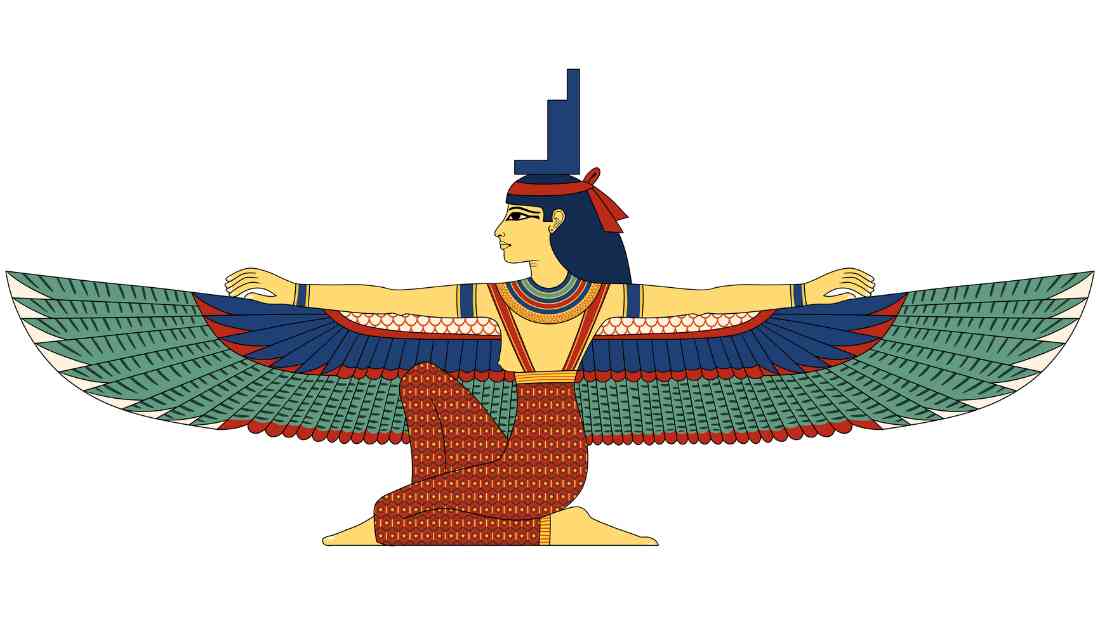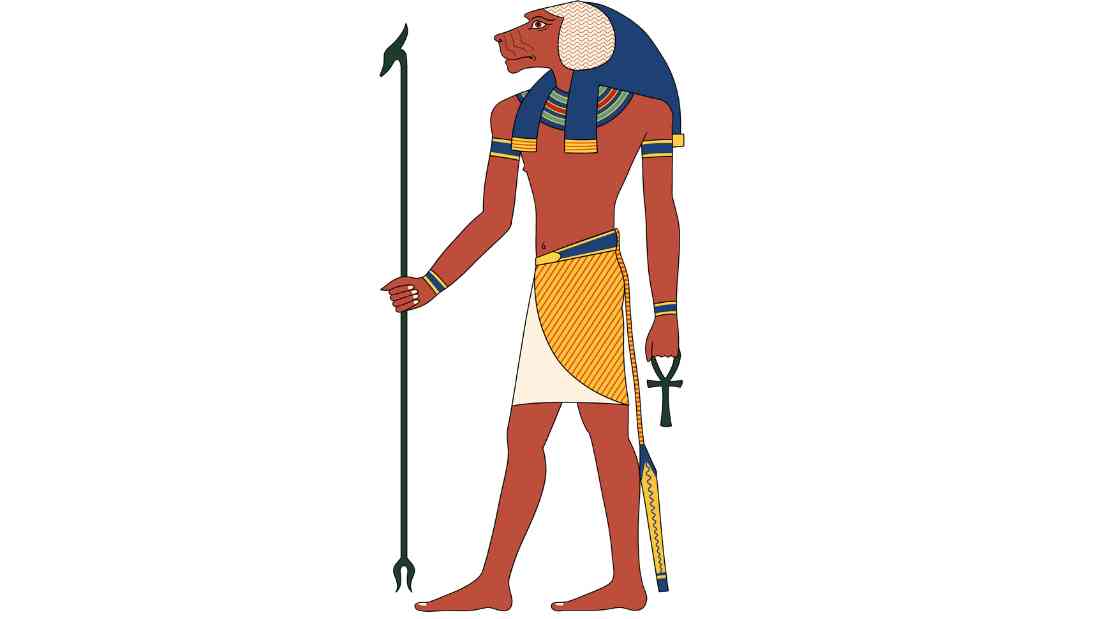The pantheon of ancient Egypt is filled with a diverse array of deities, each symbolizing unique aspects of life, death, and the universe. Among these divine beings, one stands out for its unique form and attributes – the Egyptian god Babi.
This deity, often depicted as a baboon, holds a plethora of fascinating stories and mysteries.
Who is the Ancient Egyptian God Babi?
Babi, alternatively referred to as Baba, holds a distinctive place in the pantheon of ancient Egyptian deities. This intriguing god is primarily associated with virility, aggression, and sexual power, embodying the potent and primal forces of nature.
His name, ‘Babi’, translates directly to ‘bull of the baboons’, a title befitting his dominant status among other baboon gods in the Egyptian religious system.
Delving deeper into his persona, Babi is often depicted as a fierce and assertive deity, reflecting the raw energy and territorial dominance of male baboons in the wild.
His association with sexual power and virility isn’t merely symbolic. It’s deeply rooted in the characteristics of the animal form he takes.

Baboons, especially the males, are known for their high level of sexual activity, a trait that the ancient Egyptians didn’t overlook when they crafted Babi’s persona.
However, the Egyptian god Babi is more than just a symbol of aggression or sexual power.
He represents a complex amalgamation of primal forces, dominance, and celestial power, making him an intriguing and unique figure in the vast pantheon of ancient Egyptian gods.
Babi in Ancient Egyptian Mythology
Babi is believed to be the first-born son of Osiris, the god of the dead, and Isis, the goddess of magic and life.

This lineage ties Babi closely to the underworld and the afterlife, a connection further reinforced by his frequent appearances in the Egyptian Book of the Dead.
In these ancient texts, Babi is often portrayed as a guardian of the deceased, protecting souls from dangerous creatures as they journey through the underworld.

EternalSpace1977, CC BY-SA 4.0, via Wikimedia Commons
Despite his ferocious and aggressive depiction, Babi also symbolizes fertility and sexual power.
As the ‘bull of the baboons,’ he embodies the raw, untamed energy and sexual prowess of the male baboon, a characteristic that was revered and feared in equal measure in ancient Egypt.
Interestingly, Babi also has a celestial aspect. Baboons were believed by the Egyptians to house the spirits of the dead, and as such, Babi was often associated with the night sky and celestial bodies.
This connection further enhanced his role as a protector of the dead and a guide for souls transitioning to the afterlife.
However, Babi’s reputation was not solely positive. His aggressive nature and association with raw, primal forces also led him to be viewed as a deity of chaos and violence. Some tales even depict Babi as a devourer of entrails, reflecting his untamed and wild side.
All these diverse aspects make the mythology surrounding the Egyptian god Babi a fascinating study. His dualistic nature, representing both protection and chaos, fertility and aggression, underscores the complexity and richness of ancient Egyptian belief systems.
Babi’s Symbolism and Iconography
In terms of iconography, the Egyptian god Babi was primarily depicted as a baboon, a common animal in Egypt.

Eternal Space, CC BY-SA 4.0, via Wikimedia Commons
However, unlike the other baboon gods such as Thoth, the god of wisdom, Babi was often shown in a more aggressive and primal state, reflecting his raw, untamed energy.
The image of Babi was used as a protective symbol in the Book of the Dead, where he is depicted warding off dangerous creatures from the deceased’s soul. This showcases Babi’s role as a protective deity, despite his ferocious nature.
The Worship of Babi
The ancient Egyptians had a complex and multifaceted religious system, with rituals and practices that varied greatly depending on the deity in question.
The worship of Babi, the ‘bull of the baboons,’ was not as widespread or mainstream as that of other deities like Ra or Osiris. This is primarily due to his aggressive nature and association with primal forces, which may have been feared or revered in equal measure.
However, Babi held a significant place in funerary rites and rituals associated with the afterlife due to his believed role as a guardian of the deceased.
In the Book of the Dead, Babi is often depicted warding off dangerous creatures from the deceased’s soul, protecting those journeying through the underworld. As such, images and amulets of Babi were frequently included in burial goods to serve as protection in the afterlife.
In fact, artifacts and references associated with Babi have been found in various contexts. For instance, a stone statue of Babi was discovered at the Ramasseum memorial temple (or mortuary temple) of Pharaoh Rameses II, located in the Theban necropolis in Upper Egypt.

Mary Harrsch, CC BY 4.0, via Wikimedia Commons
Final Thoughts on the Egyptian God Babi
The Egyptian deity Babi, embodying a potent mix of ferocity and protection, serves as a compelling window into the intricate tapestry of ancient Egyptian mythology.
His dualistic nature reflects the multi-faceted perspective ancient Egyptians held towards the divine, where deities were not purely benevolent or malevolent but often embodied a range of human experiences and emotions.
As the ‘bull of the baboons’, Babi symbolized raw power, virility, and aggression, traits that were both revered and feared.
Yet, he was also seen as a protector, guiding the souls of the deceased through the underworld, warding off dangers that lurked on their journey to the afterlife.
This intriguing blend of characteristics underscores the nuanced understanding the ancient Egyptians had of life, death, and the divine.
Babi’s role in funerary rites and rituals further emphasizes the importance placed on the afterlife in ancient Egyptian culture. His presence in burial goods and his depiction in the Book of the Dead highlight how intertwined he was with beliefs about death and the journey beyond.

Frequently Asked Questions About The Egyptian God Babi
Babi, also known as Baba, was a deity in ancient Egyptian mythology. He was often depicted as a baboon or as a combination of a man and a baboon. Babi was known for his aggressive and virile nature.
The Egyptian god Babi was associated with virility, aggression, and the primal force. His name means “bull of the baboons,” symbolizing his power and strength. He was also believed to control the darkness and chaos in the underworld.
While Babi held a significant place in certain aspects of Egyptian mythology, particularly in funerary rites and rituals, he was not considered a major god like Ra, Isis, or Osiris. His worship was not as widespread, likely due to his aggressive nature.
Babi’s worship was primarily associated with funerary rites. Images and amulets of Babi were often included in burial goods to serve as protection in the afterlife. Furthermore, he may have been invoked in fertility rituals due to his association with virility.
There are no known temples dedicated solely to Babi in the historical record. However, references to Babi have been found in various contexts, including in the Ramasseum memorial temple of Pharaoh Rameses II.
In the Book of the Dead, Babi is often depicted warding off dangerous creatures from the deceased’s soul, protecting those journeying through the underworld. This made him an important figure in ancient Egyptian beliefs about death and the afterlife.
Babi is most commonly depicted as a baboon or as a man with the head of a baboon. He’s often shown in a state of arousal, reflecting his association with virility and sexual power.
Posts About the Egyptian Pantheon of Gods
The Pantheon of Ancient Egyptian Gods – A Comprehensive Guide
The Wrath of Montu – The Mythology of the Egyptian War God
Egyptian God Ammit – The Eater of Hearts in Ancient Egyptian Mythology
The Nightly Journey of Khonsu – The Ancient Egyptian God of the Moon
Ihy – The Joyful Ancient Egyptian God of Music
Min – The Ancient Egyptian God of Fertility
The Egyptian God Anubis – His Evolution from Son of Ra to Protector of the Dead
Unraveling the Mysteries of Babi – The Ancient Egyptian Baboon God
Ra, the Egyptian Sun God – Symbolism and Significance in Ancient Egyptian Culture
Sobek: The Ferocious Crocodile God of Ancient Egypt
The Enigmatic Mythology of Horus, the Egyptian Sky God
The Egyptian God Set – Protector of the Desert and Lord of Conflict
The Ancient Egyptian God Medjed: The Guardian of Osiris and the Afterlife
Anput, the Wife and Female Version of Anubis
Selket – The Scorpion Crowned Egyptian Goddess
Shu – The Egyptian God of Air, Wind, Peace and Lions
Hapi the Androgynous Ancient Egyptian God of the Nile
The Egyptian Sky Goddess Nut: Myth and Symbolism
The 42 Laws of Maat: The Moral Principles of the Ancient Egyptians
The Ancient Egyptian Goddess Mut: The Maternal Power in Egyptian Mythology
The Warrior Goddess: Neith in Ancient Egyptian Mythology
The God Bes: The Joyful Dwarf Deity in Ancient Egyptian Culture
The Egyptian Gods of Love: Hathor and Isis in Ancient Egyptian Mythology
Confronting the Serpent: The God Apep, the Nemesis of Ra in Egyptian Myth

